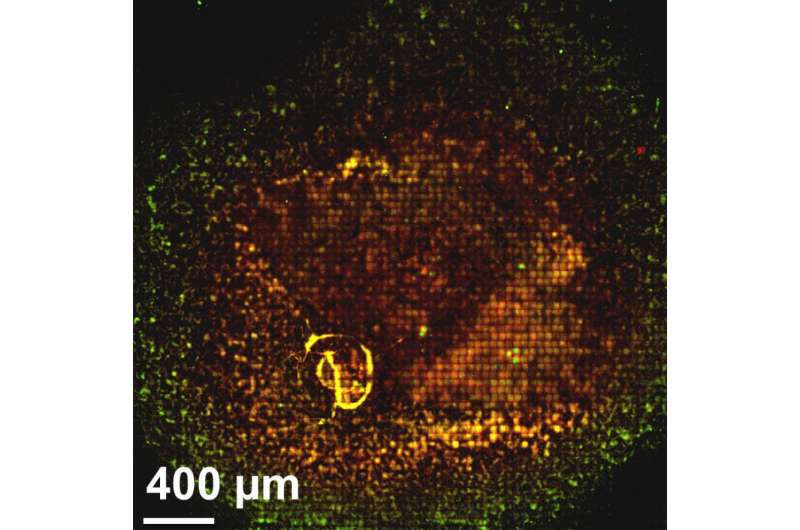Signal for the activation of the production of EPS (green) and BPS (orange) in the bacterial community. Credit: Salim Timo Islam
Research by INRS (Institut National de la Recherche Scientifique) Professor Salim Timo Islam and his Ph.D. student Fares Saïdi has recently revealed that multicellular physiology in the social bacterium Myxococcus xanthus—a bacterium that can actively reorganize its community according to the environment in which it is found—is modulated by the secretion of two natural sugar polymers in separate zones of a swarm. Results from their research, done in collaboration with an international team, have been published in the journal PLOS Biology.
Professor Islam has been carrying out research in bacterial physiology for four years, focusing on the interactions of bacterial cells with each other, as well as with underlying surfaces. Along with Saïdi, they are investigating the origins of multicellularity. More precisely, their work revolves around the factors that allow cells to multiply, specialize, communicate, interact, and move. These behaviors are all associated with multicellularity as they promote the expansion of a community of cells and the formation of complex structures.
Their research has characterized two compounds contributing to multicellularity and the distinct areas of production, for each, within a community. Exopolysaccharide is produced more by cells at the periphery of the swarm. Production of the second sugar polymer, a novel biosurfactant, is enriched toward the center of the swarm. "Since the factors contributing to the development of bacterial communities remain poorly understood, it is very exciting to have identified another," says Islam, a specialist in microbial biochemistry and co-first author of the study along with Saïdi.
A Model Bacterium
Multicellularity is typically associated with organisms such as fungi, plants, and animals. As part of this study, the researchers studied the basis for this evolutionary transition on a smaller scale: the bacterium Myxococcus xanthus. This organism has the distinction of being able to reorganize the structure of its population, allowing it to react to different environmental signals and even eat other bacteria.
In response to a hostile environment, such as in instances of nutrient deficiency, this bacterium directs its homogenous population to specialize into three subtypes of cells. These communities thus form 3-dimensional structures, visible to the naked eye. It is thanks to this multicellular lifestyle that they ensure the survival of their community.
More information: Salim T. Islam et al, Modulation of bacterial multicellularity via spatio-specific polysaccharide secretion, PLOS Biology (2020). DOI: 10.1371/journal.pbio.3000728
Journal information: PLoS Biology
Provided by Institut national de la recherche scientifique - INRS
























